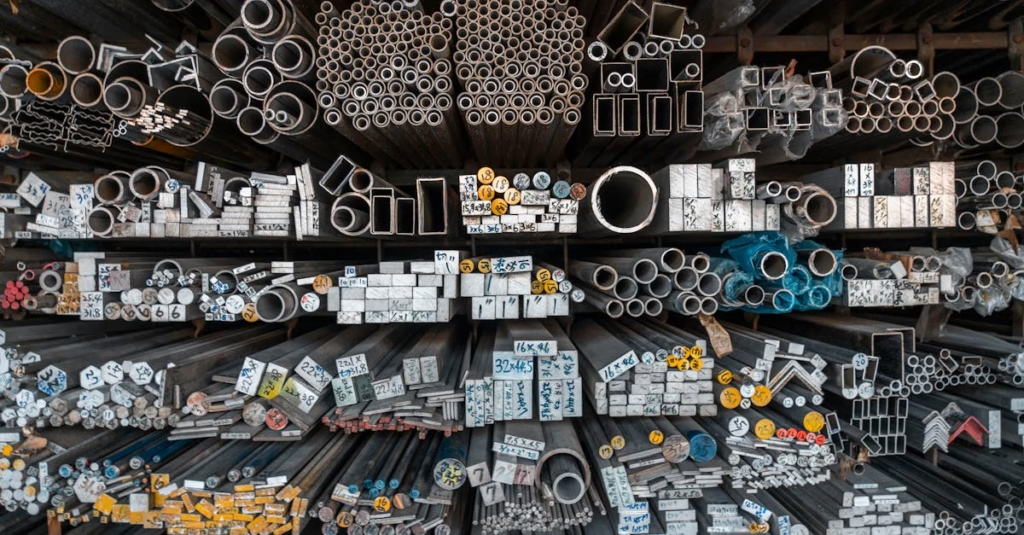In the construction of steel structures, detailing the joints is just as crucial as detailing the main structural members. The joints are where loads from various parts of the structure are transferred to different members, making them critical for the safety and stability of the entire system. Proper joint detailing ensures that a structure can withstand the loads it is subjected to, including dead loads, live loads, and other external forces. Steel hollow sections—comprising Rectangular Hollow Sections (RHS), Square Hollow Sections (SHS), and Circular Hollow Sections (CHS)—are frequently used in modern steel structures due to their strength, aesthetic appeal, and efficient use of material. This article will discuss the most commonly used joint types for connecting these steel hollow sections, detailing their formation and benefits.

Types of Joints for Steel Hollow Sections
Steel hollow sections are versatile components that can be used in various structural applications. The most common joint types used to connect these hollow sections include K-type, knee-type, N-type, gap, overlap, and Vierendeel joints. Each of these joints has its unique formation process and specific structural advantages, ensuring that the overall stability of the structure is maintained.
1. K-Type Joints
The K-type joint is one of the simplest and most economical types of connections used in steel hollow section structures. This joint is formed when the centroidal axis of the horizontal member and two lateral bracings intersect with the central axis of the top chord. In such joints, it is essential that the ends of the hollow sections are always sealed. If the hollow section’s ends are not sealed due to excessive width, a plate is welded onto the open end to close it, preventing internal corrosion and ensuring that the connection with other members is secure. This makes the K-type joint a highly effective choice for structural stability, as it simplifies the design and minimizes the need for additional components like gusset plates.
2. Knee-Type Joints
Knee-type joints are primarily used to enhance the stability of connections between vertical and horizontal members of a structure. These joints are typically welded, with the top chord welded directly to the main column. A haunch, which is a suitably cut piece of material, is then welded to both the vertical member and the top chord. The haunch stiffens the joint, increasing its overall stability. This type of joint is commonly used in structural systems where additional strength is required to handle larger forces or when a higher degree of stability is needed in the vertical-horizontal connection.
3. N-Type Joints
N-type joints are formed to connect web members to both the top and bottom chords of a structure. These joints are designed to eliminate the need for gusset plates, which are often used in traditional steel connections. The process of creating an N-type joint involves welding the vertical member directly to both the top and bottom chords. Afterward, the diagonal members are welded to both the top and bottom chords as well as to the vertical member, with double cuts made at the ends of the diagonal members. This direct connection method not only simplifies the design but also automatically seals the ends of the hollow sections, reducing the risk of internal corrosion and providing a more streamlined, efficient structure.
4. Gap Joints
Gap joints are typically used when two smaller sections need to be connected to a larger section. This type of joint forms when the intersection of the centroidal axes of two smaller members aligns with the centroidal axis of the larger member. Gap joints are commonly used in column bracings where smaller diagonal bracing members meet larger structural members such as floor beams. In this type of joint, single cut bracings are directly welded to the floor beam, creating a strong and stable connection between the two sections. The use of gap joints helps optimize material use and ensures that the structure remains strong without excessive weight or material usage.
5. Overlap Joints
Overlap joints are used in situations where three smaller members need to be connected in close proximity. In this type of joint, two diagonal members are welded to horizontal bracings, with their centroidal axes intersecting along the axis of a third member. Overlap joints are often used in elevation, where bracing members are positioned to maximize stability while minimizing the complexity of the connection. In these joints, the diagonal bracing members typically have double cuts at the ends, ensuring a secure weld to the horizontal bracings. The overlap joint offers a symmetrical layout, which simplifies the overall design while providing an effective and stable connection between multiple members.
6. Vierendeel Joints
The Vierendeel joint is typically used when the vertical member has a smaller width than the chord members. This joint involves the vertical member being welded directly to the top chord using fillet welds, with no additional gusset plates required. The Vierendeel joint is particularly suitable for situations where the vertical member does not need to bear significant axial forces, making it a more efficient option compared to other types of joints. This joint’s streamlined design reduces the need for additional material while maintaining the integrity of the connection, ensuring that the structure remains stable under load.
Conclusion
Joint detailing plays an essential role in ensuring the safety, stability, and efficiency of steel structures. The various types of joints used for steel hollow sections—K-type, knee-type, N-type, gap, overlap, and Vierendeel joints—offer a range of benefits, from simplifying construction to reducing material use and improving structural integrity. Each joint type serves a specific purpose and is designed to meet the demands of the overall structural system, ensuring that the structure can efficiently transfer loads and withstand external forces. By understanding the different joint types and their advantages, engineers can design steel structures that are both safe and cost-effective, capable of performing optimally under a range of conditions.
